四月份的时候,有位朋友去美团面试,他说被问到Redis与MySQL双写一致性如何保证? 这道题其实就是在问缓存和数据库在双写场景下,一致性是如何保证的?本文将跟大家一起来探讨如何回答这个问题。

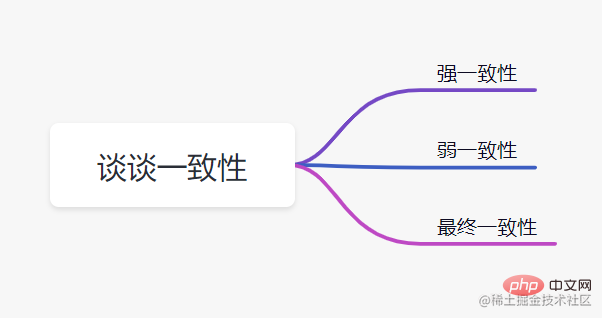
一致性就是数据保持一致,在分布式系统中,可以理解为多个节点中数据的值是一致的。
Caching can improve performance and relieve database pressure, but using cache can also lead to data inconsistency problems. How do we generally use cache? There are three classic caching patterns:
Cache-Aside Pattern, that is, Bypass cache mode, is proposed to solve the problem of data inconsistency between the cache and the database as much as possible.
The read request process of Cache-Aside Pattern is as follows:
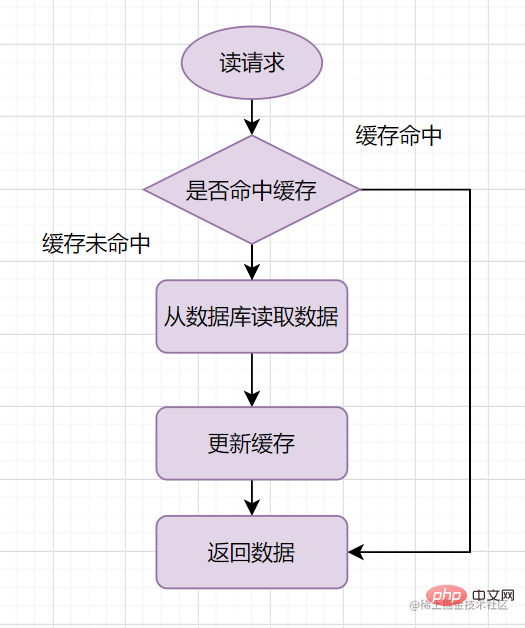
The write request process of Cache-Aside Pattern is as follows:
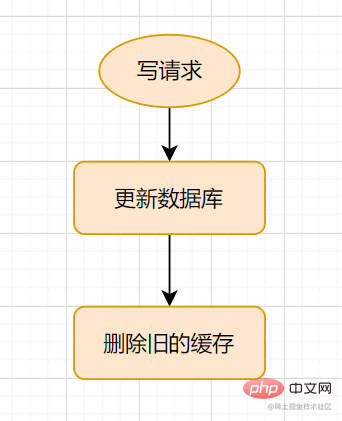
When updating, first update the database and then delete the cache .
In Read/Write Through mode, the server uses the cache as the main data storage. The interaction between the application and the database cache is completed through the Abstract Cache Layer.
The brief process of Read-Through is as follows

? In fact, Read-Through is just an extra layer of Cache-Provider, and the process is as follows:
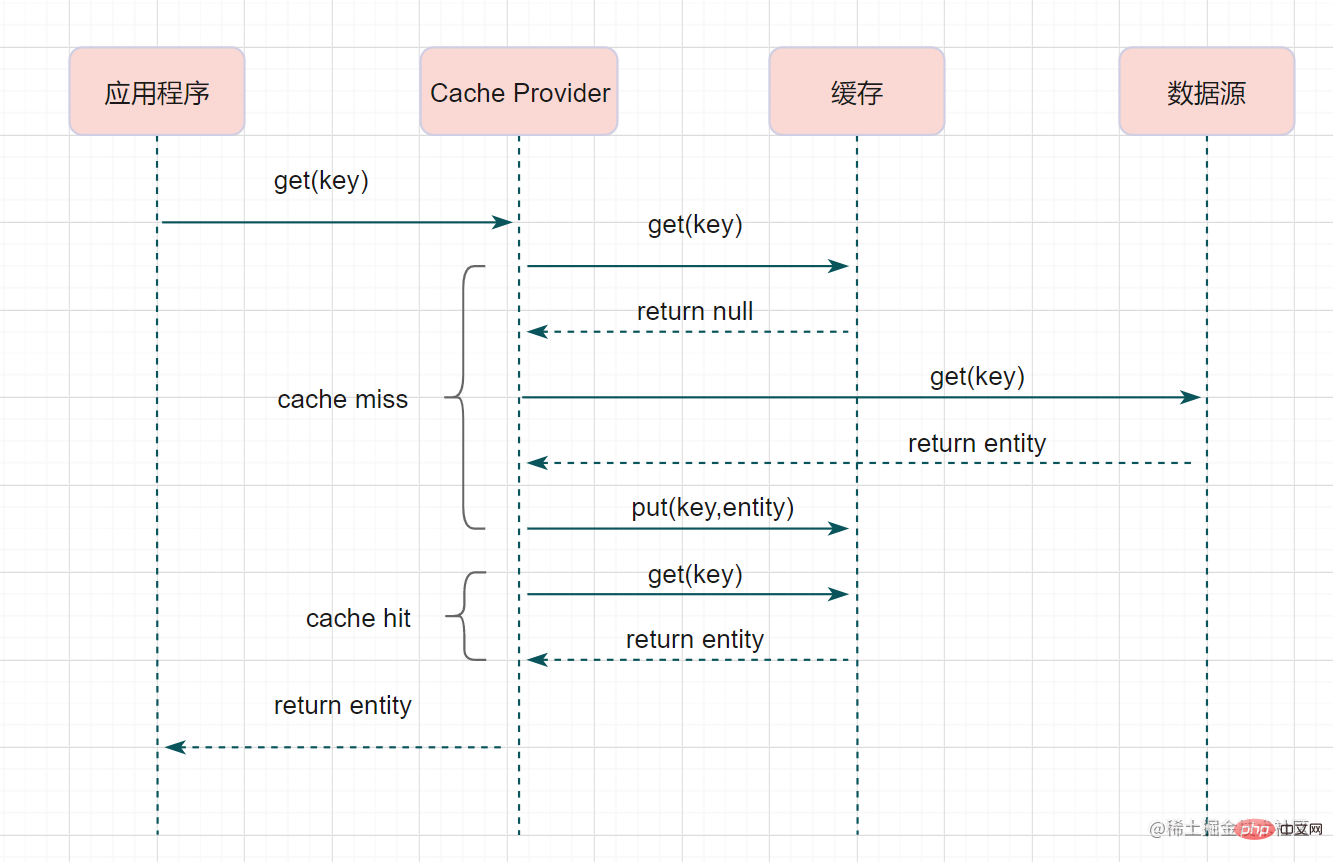 Read-Through is actually just
Read-Through is actually just
has a layer of encapsulation on top, which will make the program code more concise and reduce the load on the data source. Write-Through
Write-ThroughIn mode, when a write request occurs, the data source and cached data are also completed by the Cache Abstraction Layer The update process is as follows:  Write behind (asynchronous cache writing)
Write behind (asynchronous cache writing)
followed by Read-Through/Write-ThroughThere are similarities. Cache Provider is responsible for reading and writing cache and database. There is a big difference between them: Read/Write Through updates the cache and data synchronously, while Write Behind only updates the cache and does not directly update the database, through Batch asynchronous way to update the database.
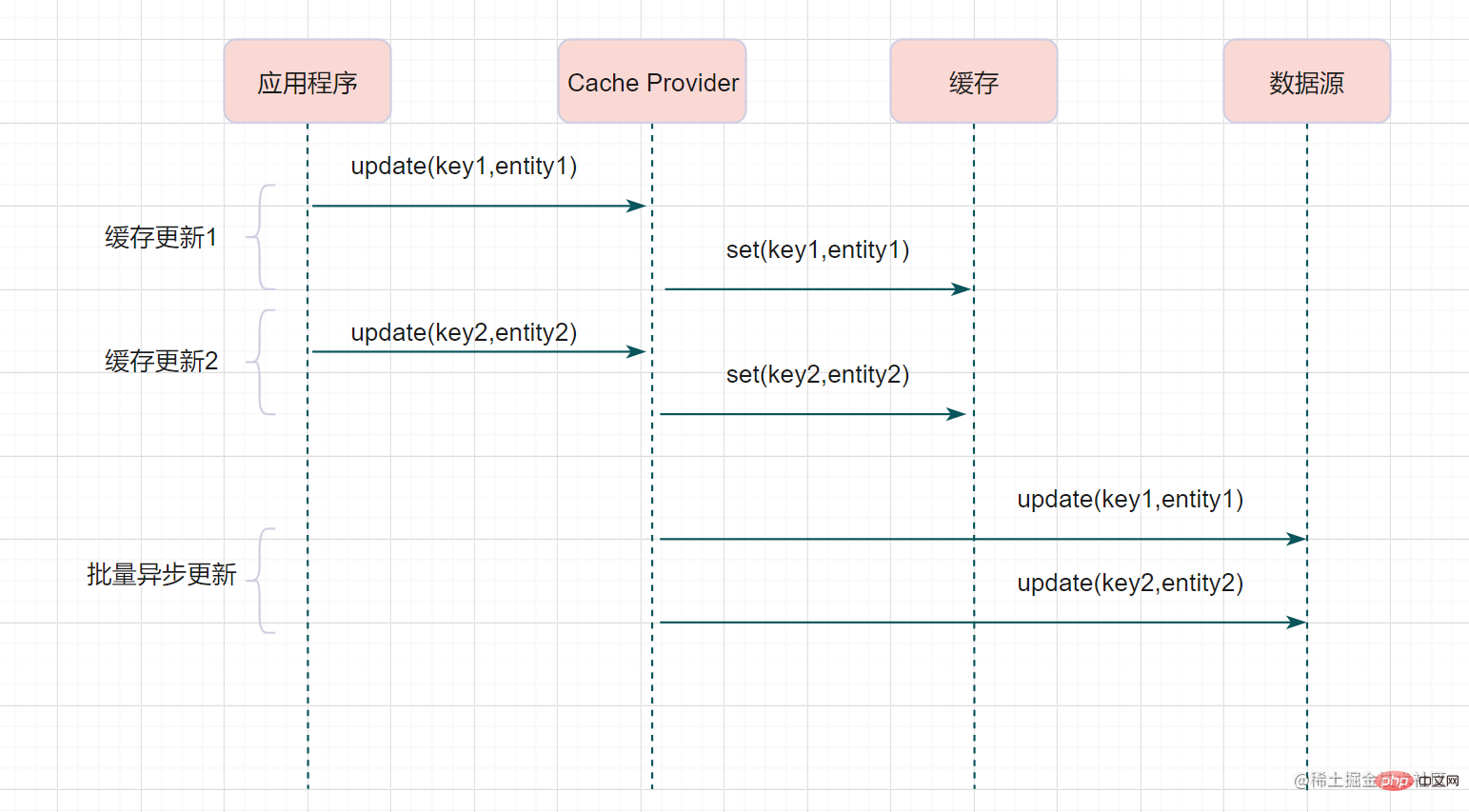 In this method, the consistency between the cache and the database is not strong.
In this method, the consistency between the cache and the database is not strong.
. But it is suitable for frequent writing scenarios. MySQL's InnoDB Buffer Pool mechanism uses this mode. When operating the cache, should I delete the cache or update the cache?
mode.
Some friends may ask, Cache-AsideWhen writing a request, why delete the cache instead of updating the cache? When we operate the cache, should we delete the cache or update the cache? Let’s look at an example first: At this time, the cache saves A's data (old data), and the database saves B's data (new data). The data is inconsistent, and dirty data appears. . If deletes the cache instead of updating the cache, this dirty data problem will not occur. Updating the cache has two disadvantages compared to deleting the cache: Suppose there are two requests, A and B, requesting A to do the update operation and requesting B to do the query and read operation. Jiang Zi has a problem La, The cache and database data are inconsistent. The cache stores old data, and the database stores new data. Therefore, Some friends may say that it is not necessary to operate the database first, just use the Cache Delayed Double Delete strategy? What is delayed double deletion? How long does it usually take to sleep for a while? Are they all 1 second? This sleep time = the time it takes to read business logic data is several hundred milliseconds. In order to ensure that the read request ends, the write request can delete cached dirty data that may be brought by the read request. Whether it is delayed double deletion or Cache-Aside first operates the database and then deletes the cache, If the second step of deleting the cache fails, the deletion failure will result in dirty data~ If the deletion fails, delete it a few more times to ensure that the cache deletion is successful~So you can introduce Delete cache Retry mechanism The retry deletion cache mechanism is okay, but it will cause a lot of business code intrusion. In fact, you can also eliminate key asynchronously through the binlog of the database. Taking mysql as an example, you can use Alibaba's canal to collect binlog logs and send them to the MQ queue, and then confirm and process the update message through the ACK mechanism, delete the cache, and ensure data Cache consistency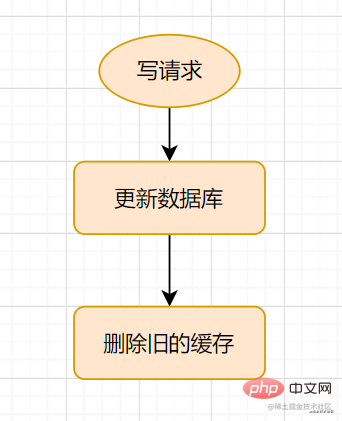

In the case of double writing, should the database be operated first or the cache first?
Cache-AsideIn the cache mode, some friends still have questions. When writing a request, why operate the database first? Why not operate the cache first? 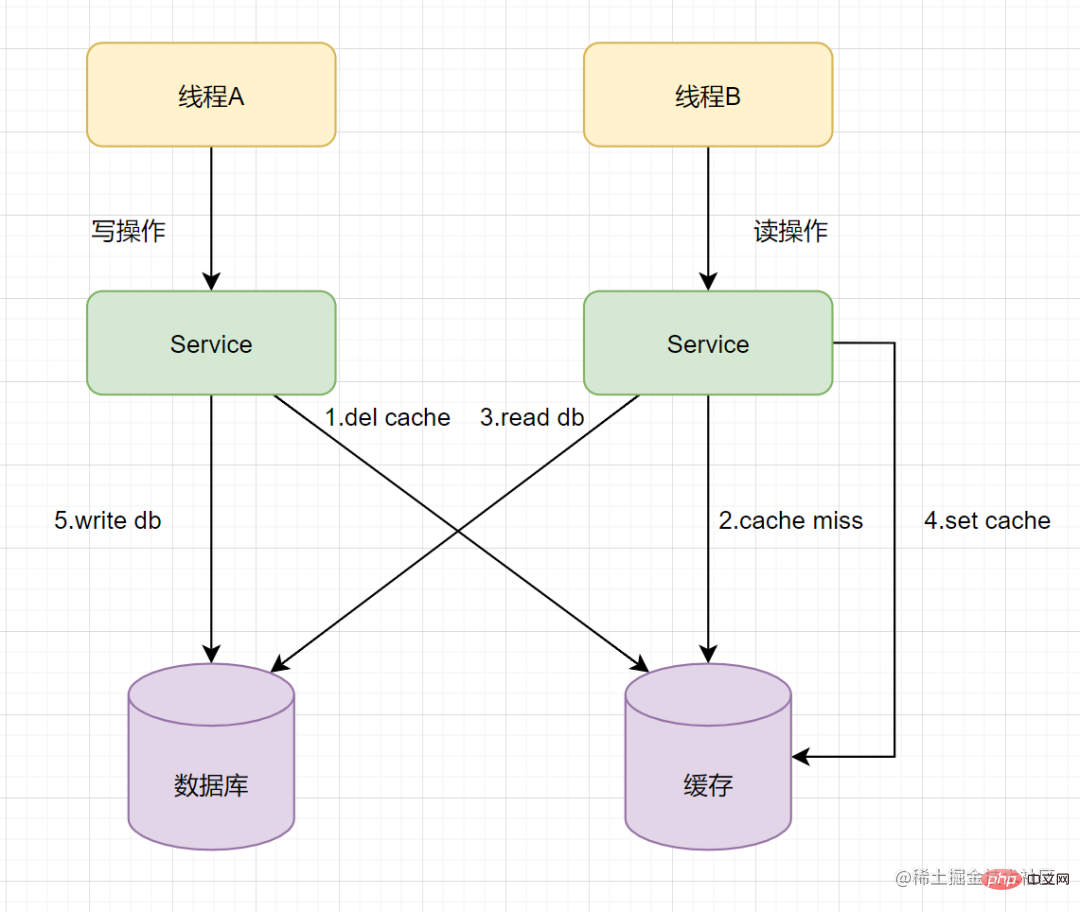
Cache-Aside cache mode chooses to operate the database first instead of the cache first. Cache Delayed Double Delete
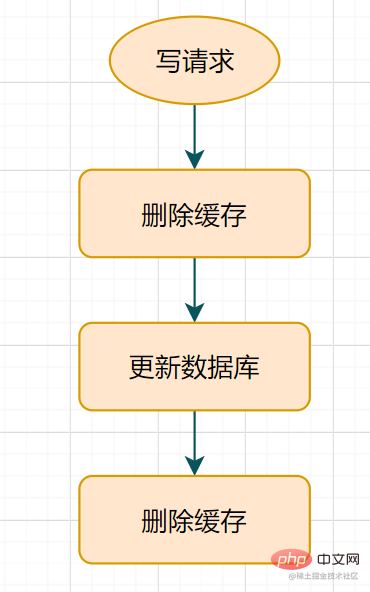
Delete cache retry mechanism
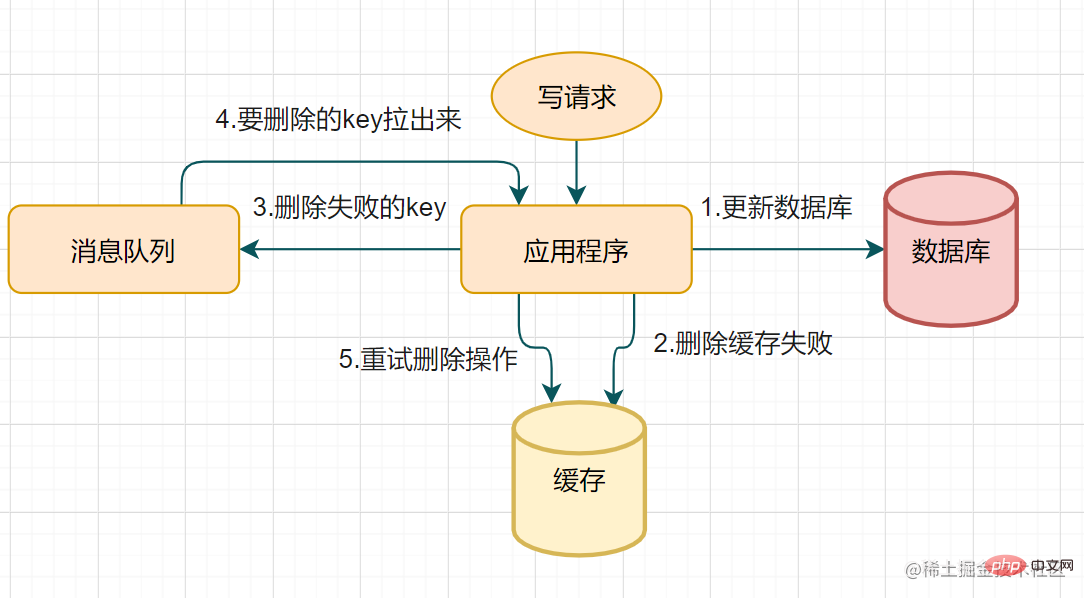
Read the biglog Asynchronous cache deletion
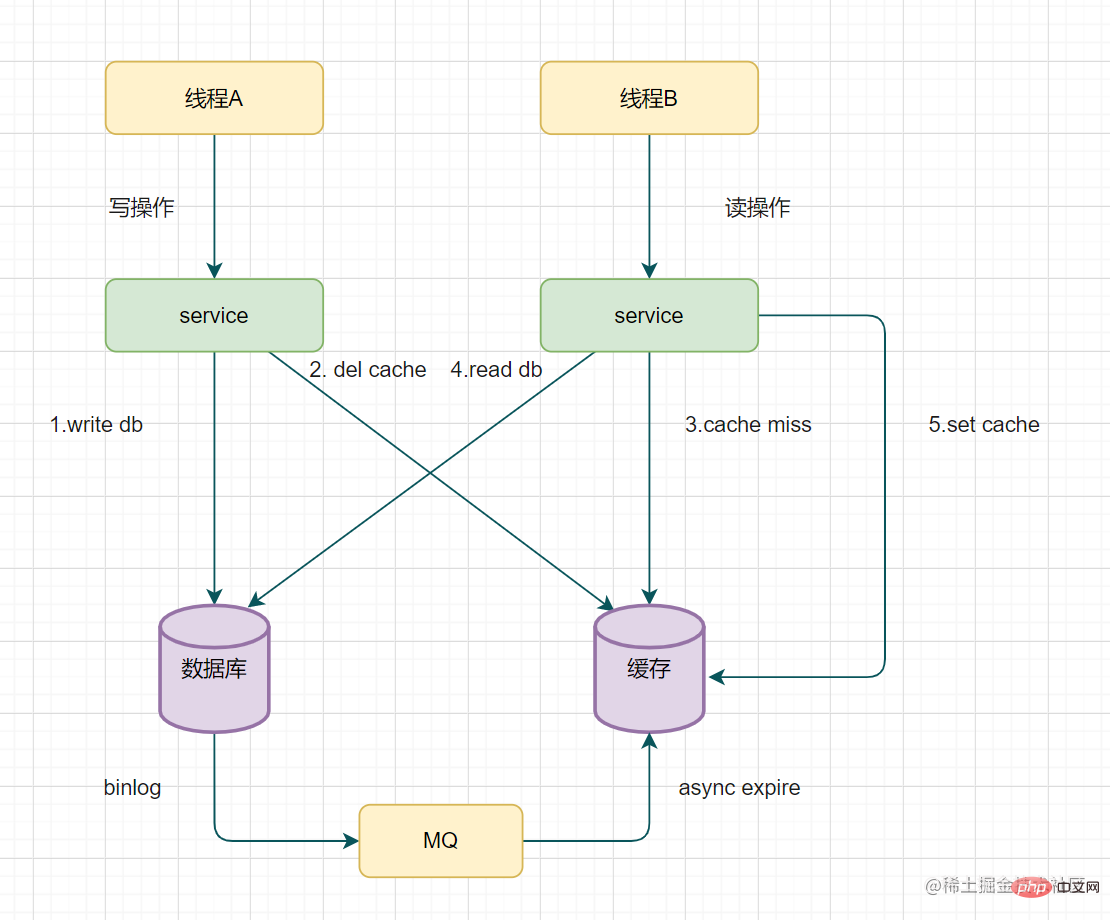
The above is the detailed content of How to ensure double-write consistency between Redis and MySQL? (Meituan Ermian). For more information, please follow other related articles on the PHP Chinese website!